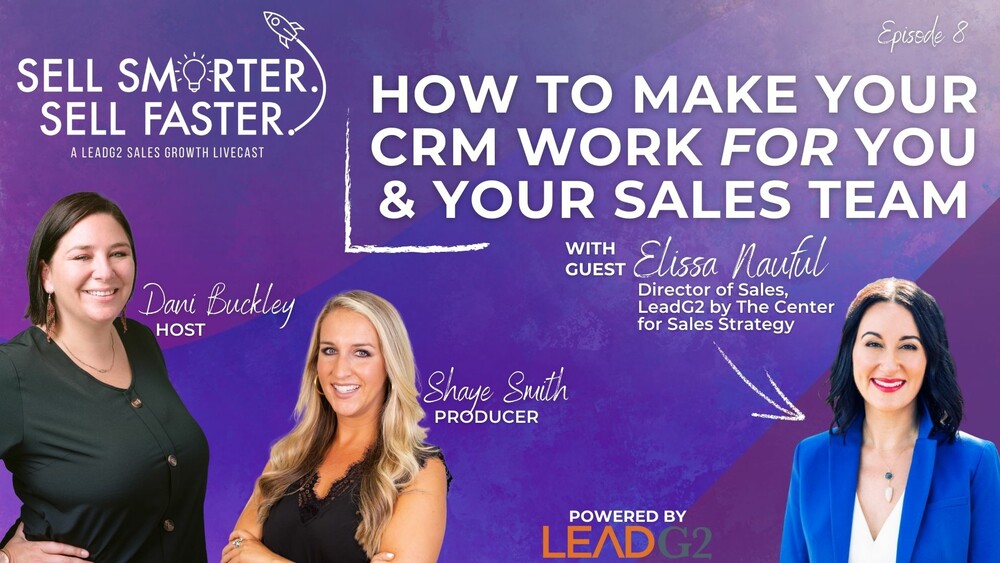How to Make Your CRM Work FOR You and Your Sales Team | Sell Smarter. Sell Faster.
In the last episode of season one, host Dani Buckley was joined by Elissa Nauful, Director of Sales at LeadG2 by The Center for Sales Strategy, where...

In my first job as an advanced financial analyst at EDS, I remember writing a business case for why we needed access to the Internet. As a financial analyst, I was responsible for making sure that my accounts and our clients followed Financial Accounting Standards Board (FASB) practices for recognizing revenues and recording expenses. Each month, I received a binder of new and updated rules and pronouncements from the FASB. While it was nice to receive a big box in the mail at work, this system used a lot of paper and printing resources, took up a lot of storage space in my cubicle, and probably cost a fortune to mail.
Receiving these updates in the mail could have gone on for years if I hadn’t turned to the back page of the latest binder and noticed a small insert that mentioned how to receive updates on the Internet. Wow… in 1995, this was pretty revolutionary. I immediately told my boss about it and was excited to start getting these updates on the Internet. When the conversation didn’t go like I had planned, I was asked to write a business case for why our department needed access to the Internet. However, a few weeks later, we had the IT infrastructure team get us set up, and soon we had a terminal that could access the Internet.
Why am I telling you this story? Because back then, besides not having access to the Internet, we also forecasted the sales pipeline and sales budgets using complex spreadsheets that included pivot tables and VLOOKUPs. These spreadsheets were so complex that only those in the Finance Department knew how they worked. Back then we didn’t have access to sophisticated, cloud-based CRMs, and most of what we did resulted in hours of wasted productivity; we updated spreadsheets for salespeople that they could have easily updated themselves if they knew how.
I was reminded of these spreadsheets from my days at EDS recently when someone from HubSpot sent me a link to the new sales templates that they had created for those who don't have a CRM. I was a little taken aback because I thought no one used these archaic spreadsheets anymore. In 2017, it amazes me that companies are still using spreadsheets to keep track of things like sales forecasts, sales pipelines, and sales funnels. You can see the aforementioned templates listed below. While they're good, they're still spreadsheets.
After you get frustrated using spreadsheets, or from having to update formulas and customize them, let’s talk and figure out if a cloud-based CRM is a better option. There are a lot out there and I guarantee that any of these cloud-based solutions will be better than your current spreadsheets.

In the last episode of season one, host Dani Buckley was joined by Elissa Nauful, Director of Sales at LeadG2 by The Center for Sales Strategy, where...

Ask any sales manager, salesperson, or business leader about CRMs and you’re likely to get mixed reviews. Most agree they are a necessary piece of...
